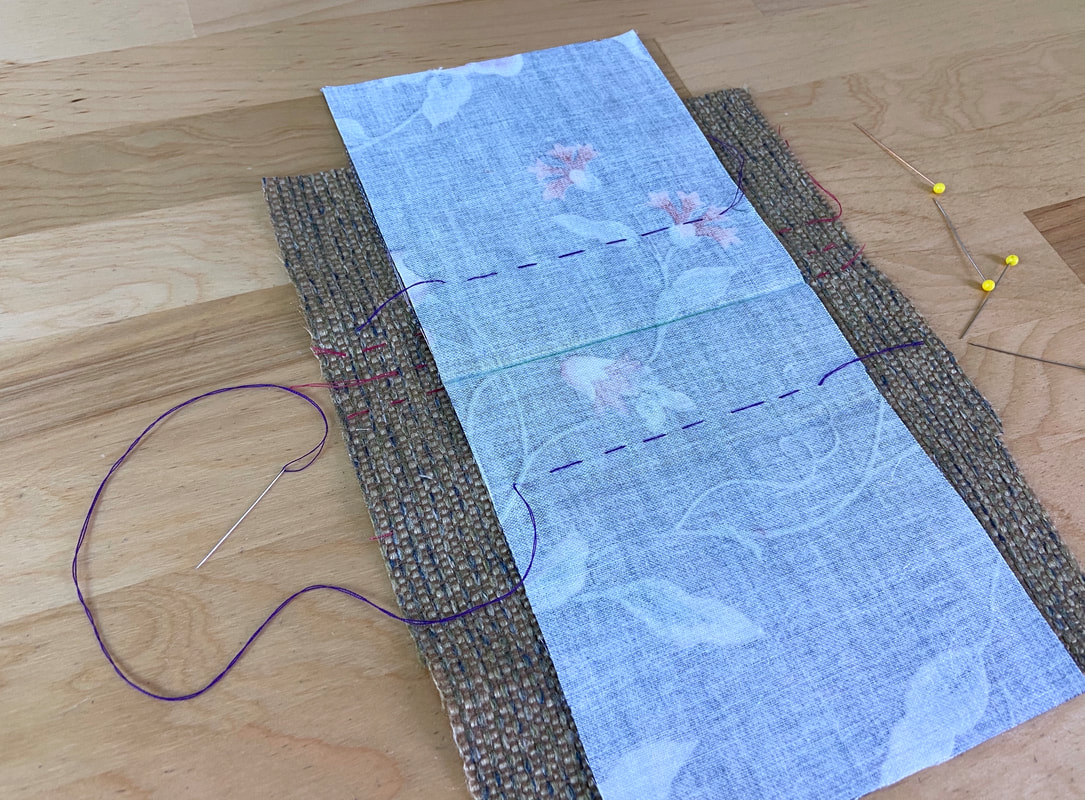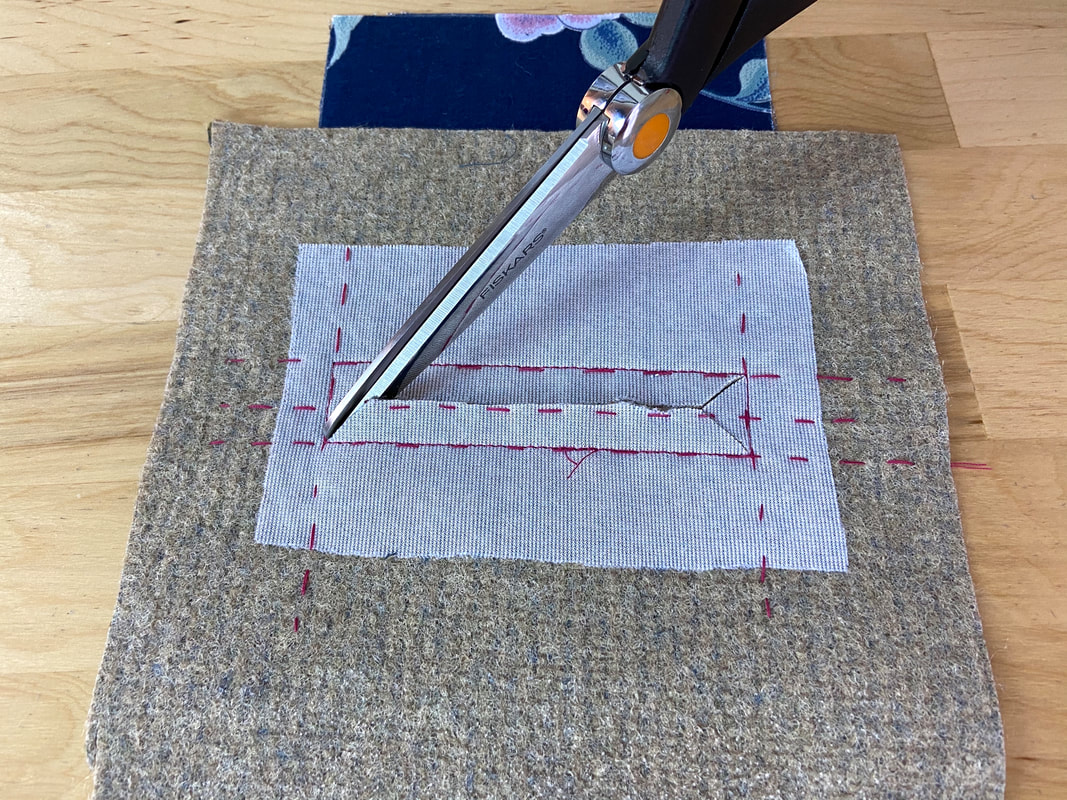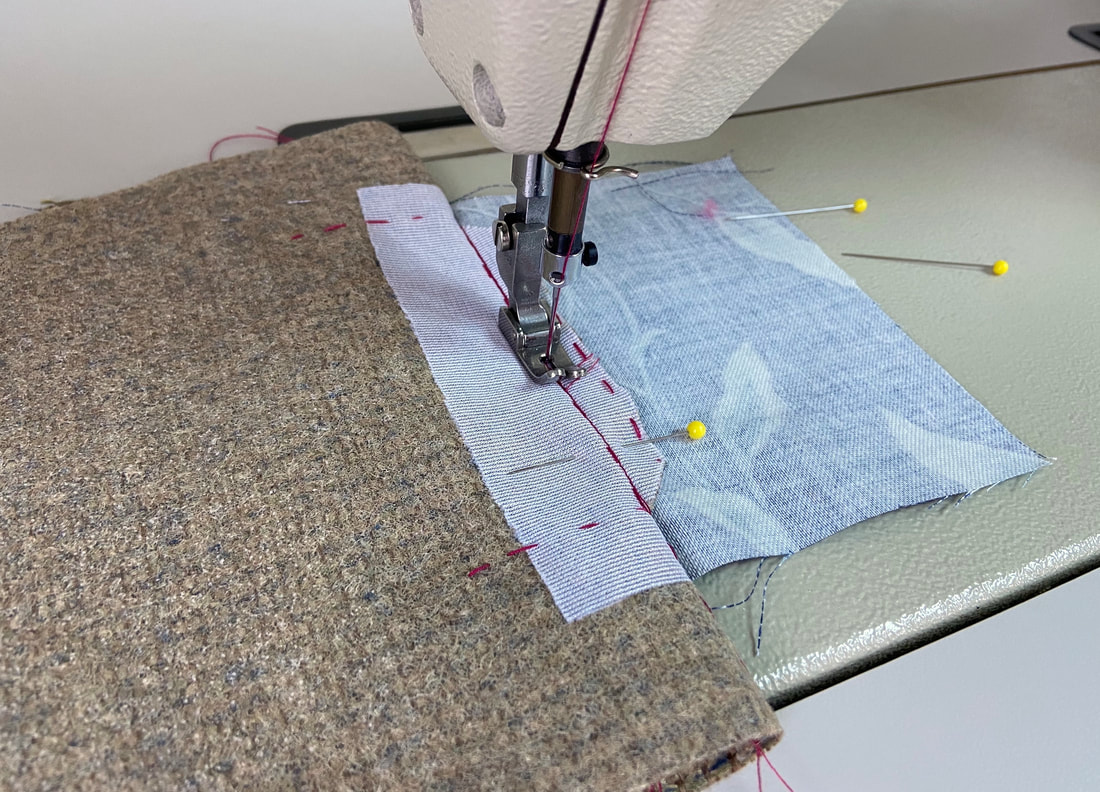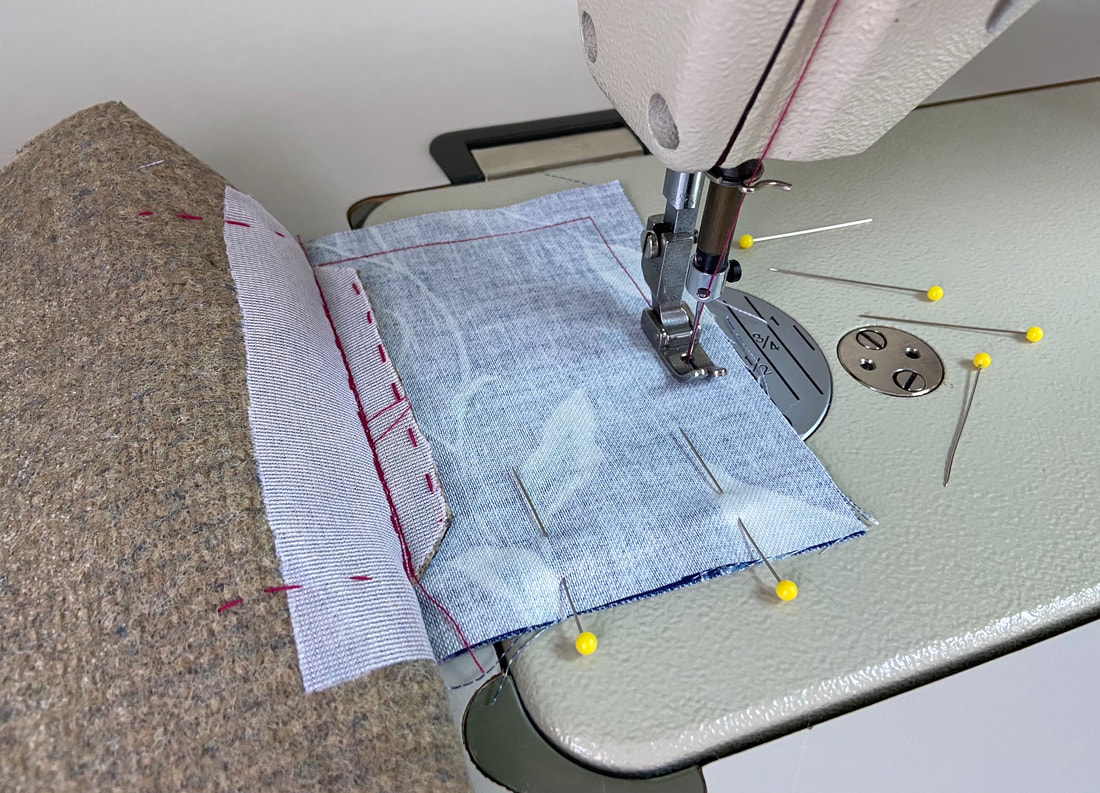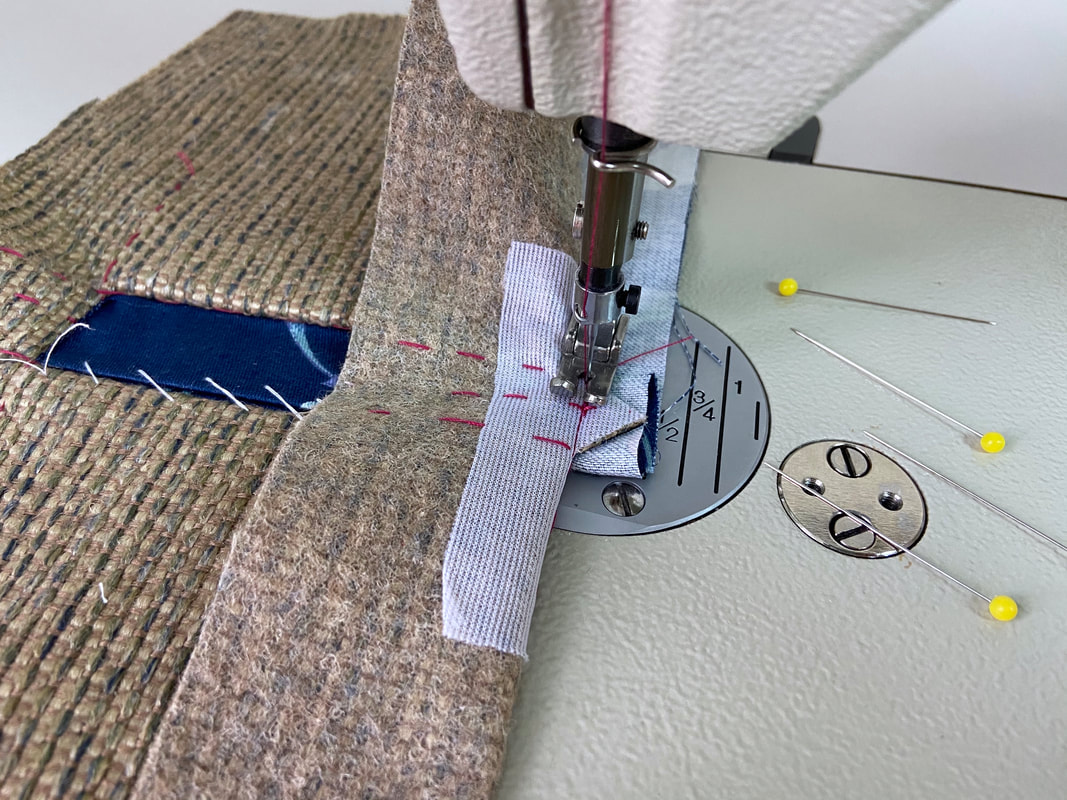Mini Tutorial: How To Sew A Self-Welt Slash Pocket
A self-welt pocket is a slash pocket style constructed from a single pocket piece.
1. Start by marking and cutting the pocket layer from the fabric of your choice. Keep in mind that this fabric will also form the pocket opening welt and be visible on the right side of the pocket application.
In this tutorial, the pocket opening measures 4" x 1" . The pocket piece will measure 5" x 10" which includes 1/2" seam allowance along all edges. Use this ratio to determine your pocket layer measurements based on your pocket opening dimensions.
In this tutorial, the pocket opening measures 4" x 1" . The pocket piece will measure 5" x 10" which includes 1/2" seam allowance along all edges. Use this ratio to determine your pocket layer measurements based on your pocket opening dimensions.
2. Fold the pocket layer in half with wrong sides touching. Iron to crease the fold line.
3. Fuse a piece of interfacing to the wrong side of the garment at the desired pocket location. The interfacing will stabilize and strengthen the finished slash pocket.
4. On the face of the garment, mark the exact pocket opening lines using a hand basting stitch. Extend the hand basting line about 1" past the pocket opening at each corner. It is also helpful to mark a lengthwise center line as this will facilitate the slashing process.
5. Align the pocket layer with the crease line (green) placed directly on top of the pocket's bottom hand basted line as shown above. It may help to mark the crease line with a quilting pencil so it will be more visible in the alignment process.
Center the pocket piece on top of the pocket opening- it should overlap by 1/2" on each side. Hand baste the pocket layer to the garment along the top and bottom (as shown).
Center the pocket piece on top of the pocket opening- it should overlap by 1/2" on each side. Hand baste the pocket layer to the garment along the top and bottom (as shown).
6. From the wrong side of the pocket application, stitch the pocket's rectangular opening following the hand basting lines as a guide. Overlap the start and end of the stitch to lock the threads. Once stitched, remove the hand basting applied in Step 5 using a seam ripper.
7. Slash down the center of the rectangle, through both the garment and pocket layer, following the hand basting line as a guide. Stop at about 1/2" from each end, then slash into each corner creating a triangle extension on each side. You should cut as close as you can into the corner but be careful not to accidentally cut the stitch.
8. Flip the pocket layer to the garment's wrong side through the slashed opening and iron the clean-finished edges flat. Based on how the pocket layer was aligned, the bottom portion of the pocket layer should be slightly longer than the top.
9. Fold the pocket piece's longer bottom portion over the pocket opening to create a welt-like fold. This folded edge should abut the pocket opening's top edge as pictured above. Iron to stabilize and crease the folded edge.
From the right side of the pocket application, it helps to whipstitch the pocket closed as this will keep the layers perfectly aligned as you complete the application.
10. Flip the bottom garment layer away from the pocket to expose the bottom seam allowance. Stitch through the seam allowance layers and the bottom pocket portion underneath following the existing stitch as a guide.
11. Next, bring the top pocket portion down and place it on top of its corresponding bottom portion such that all edges align. Insert pins perpendicularly along all edges.
12. Starting from pocket's right side, peel the garment layer to expose the triangle extension and side pocket bag. Stitch at the base of the triangle extension moving down toward the bottom of the pocket bag. Continue stitching the pocket bag at the designated seam allowance - 1/2" in this case.
As you stitch the pocket bag's left side, stitch at the base of the other triangle extension to complete and stabilize the pocket opening.
Last but not least, remove all temporary stitches including the hand basting and pocket opening whipstitch.





